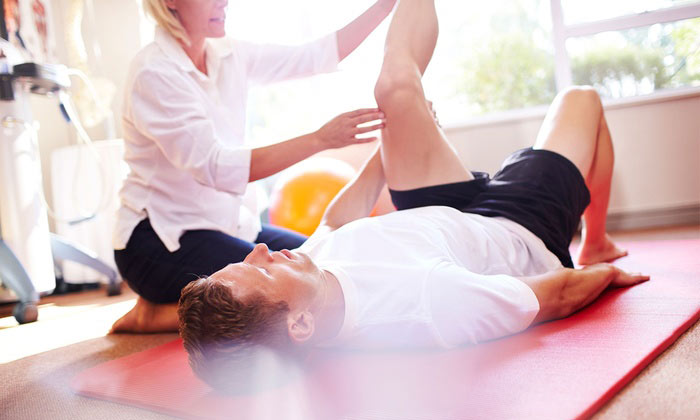
Add Dynamic and Static Stretching to Your Workouts
AFC Fitness’ personal trainers recommend warming up properly to help prevent injuries while involved in any kind of physical activity like sports and working out at the gym. The American College of Sports Medicine (ACSM) recognizes two main forms of stretching – static and dynamic.
According to the ACSM, static stretching, or traditional stretching as it’s also known, is best performed post-workout or can be done on its own. It includes isolating and moving a muscle to it’s end of range of motion, gradually, and holding for a certain amount of time. Usually around 30 – 60 seconds for older populations, or 10 – 30 seconds for everyone else. The idea is to stretch the muscle enough to feel a light discomfort, but avoiding pain. Examples of static stretching include sitting hamstring stretch, shoulder stretch and chest and arm stretches.
Dynamic stretching, also called active stretching, is more energetic. It is different from static stretching in that the stretch point is not held. It uses the muscles themselves to complete the stretch. Dynamic stretching consists of a continuing shift from one body position to another, while progressively increasing range of motion as each movement is repeated several times. This repeated movement improves blood flow to your muscles which can prevent muscle tightness and injury.
An example of dynamic stretching is swinging a leg from front to back, gradually increasing the range of motion as the movement is repeated several times. This movement helps prep muscles so they are ready to function safely during a workout.
Stretching Recommendations Based on ACSM Best Practices
– Daily stretching is recommended, but include stretching into your workouts at least 2 to 3 days a week.
– Do dynamic stretching before working out
– Flexibility exercises and stretching should target each of the major muscle groups including:
- Quads
- Hamstrings
- Shoulder
- Chest
- Hips
- Back and trunk
– Perform dynamic stretching or static stretching after exercise
– Avoid bouncing or sudden moves while stretching, this can cause injuries.
– Depending on your fitness level, stretch to a point of feeling tightness or light discomfort.
Benefits
Stretching helps prepare your body for exercise and assists the recovery process, too. Stretching can also help improve the range of motion of your joints and reduce stress.
For more information on mobility, flexibility techniques and stretching, stop by to see an Aquahab Physical Therapist or an AFC Fitness Certified Personal Trainer.
Reference: “Guidelines for Exercising, Testing and Prescription”. American College of Sports Medicine.
